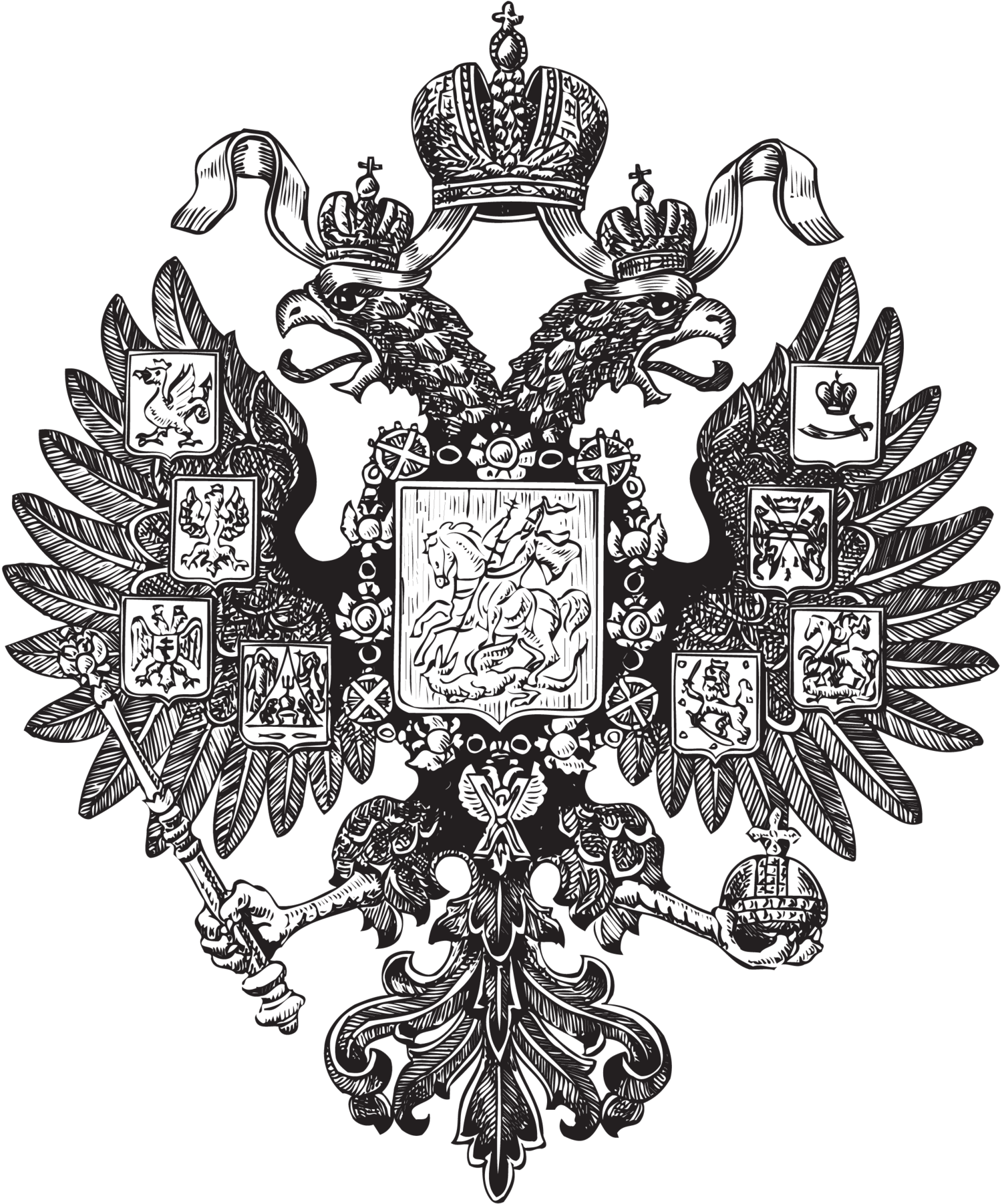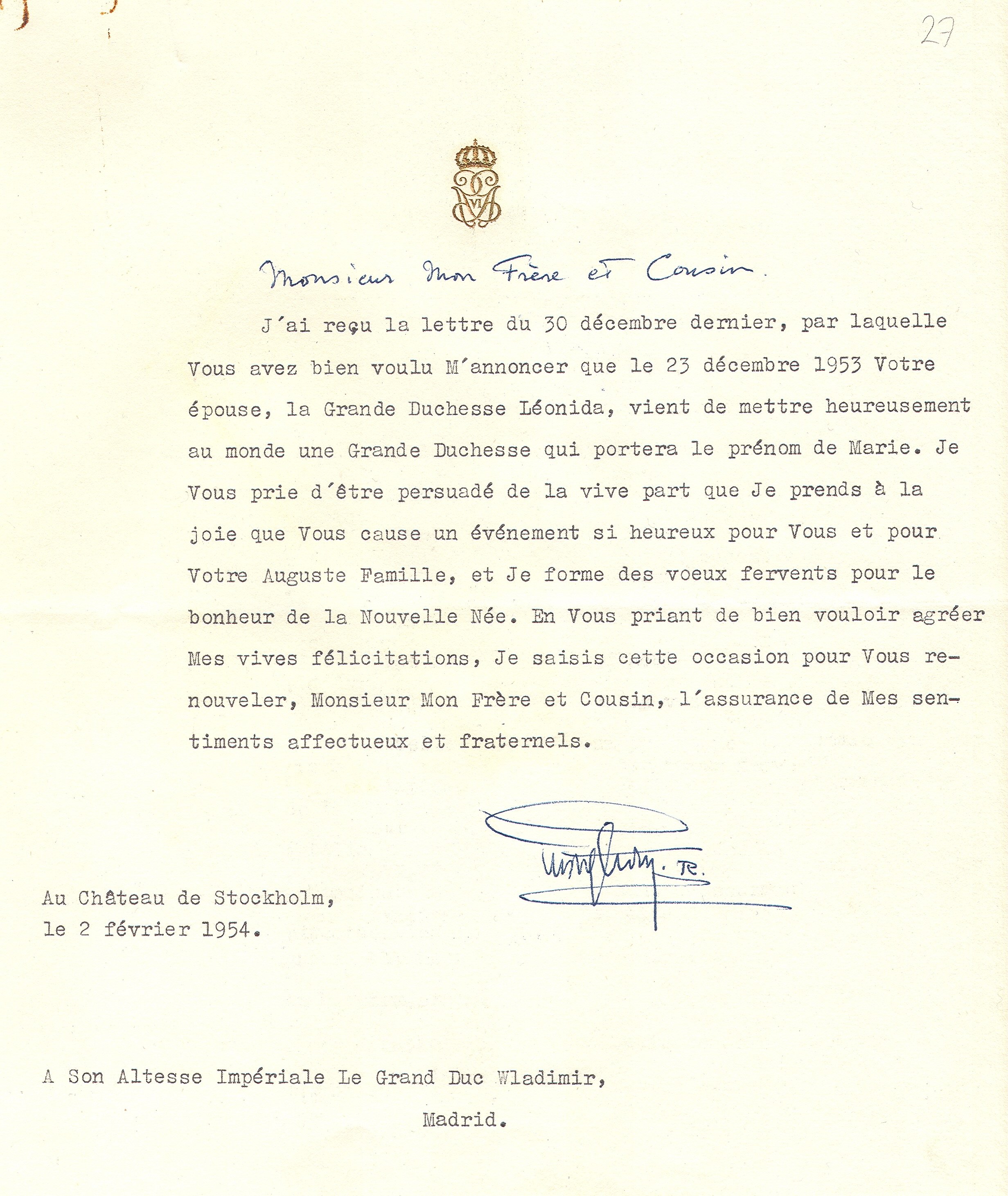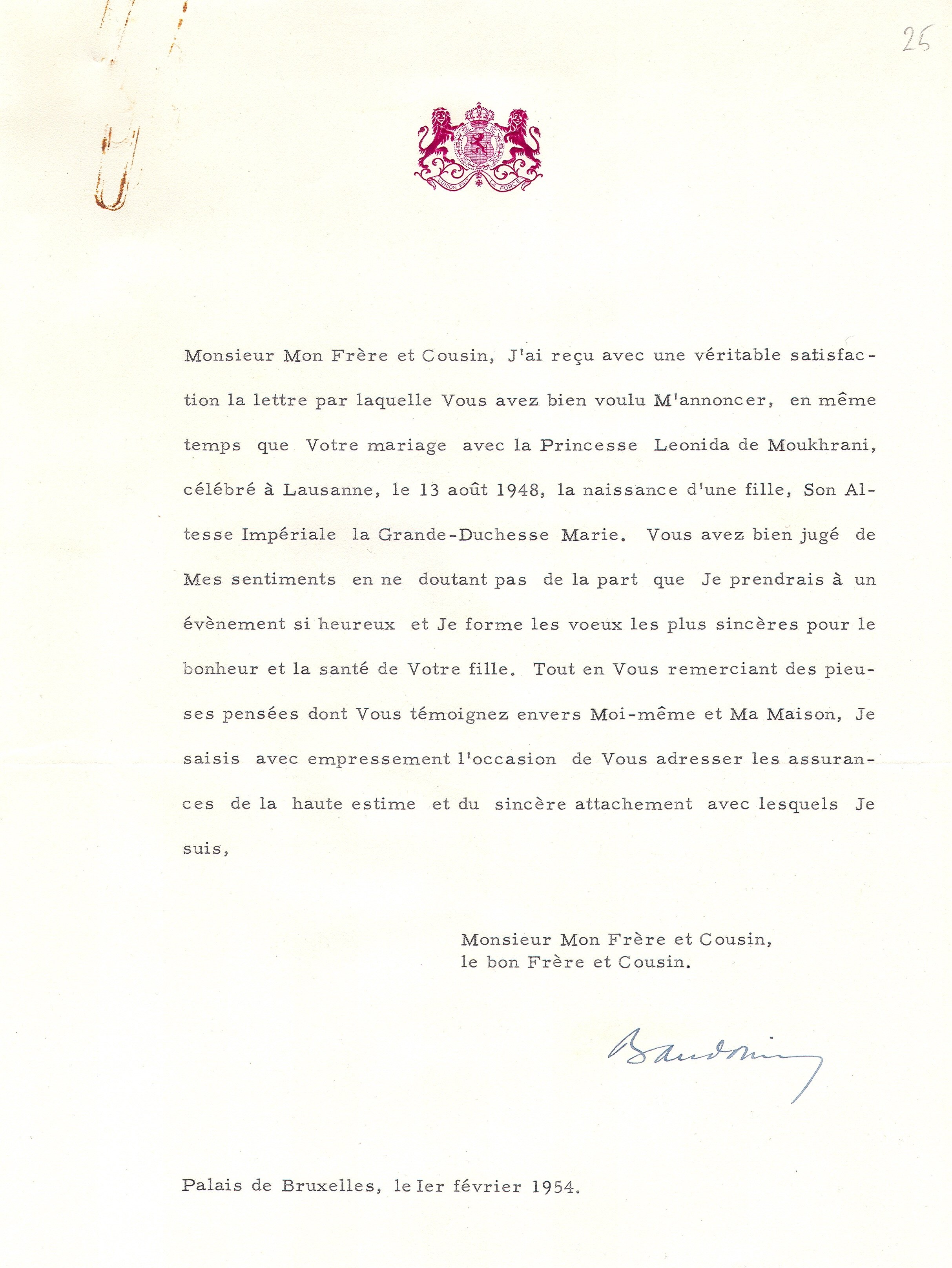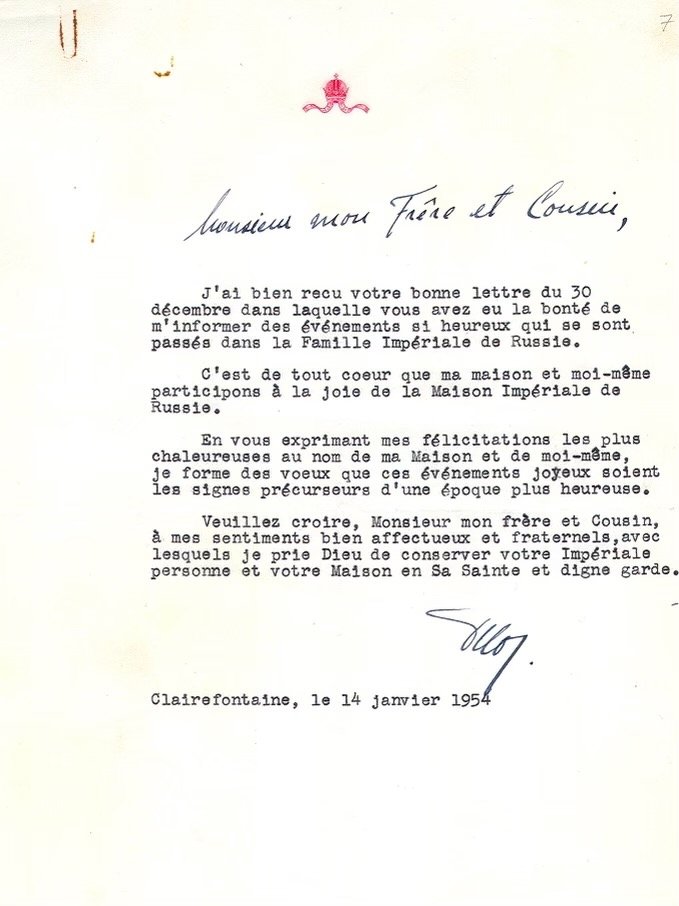HOW SOME TWENTIETH-CENTURY EUROPEAN MONARCHS ADDRESSED THE HEAD OF THE RUSSIAN IMPERIAL HOUSE, THE GRAND DUKE VLADIMIR
The historian Dr. Alexander N. Zakatov works in Moscow as the Director of the Chancellery of HIH the Grand Duchess Maria Vladimirovna, Head of the Russian Imperial House. In recent years, Dr. Zakatov has put on the Chancellery’s website (imperialhouse.ru) a number of interesting original letters and documents. These include letters written by various reigning European monarchs as well the heads of formerly reigning dynasties to the Grand Duke Vladimir, Head of the Russian Imperial House from 1938 to 1992.
There used to be a very formal custom used, at least from the 18th century if not before, when monarchs wrote to fellow monarchs. They referred to each other as “brothers” and gave assurances of “fraternal sentiments.” This “brotherly” formula was used only with fellow monarchs or with monarchs de jure (that is, the heads of dethroned royal houses). In addressing a fellow member of royalty as “brother”, a king indicated that the person he was writing to was on the same footing as he was: that is, that they were both members of the small fraternity of reigning monarchs and heads of non-reigning dynasties.
By the 1950s, this venerable tradition was still followed by some dynasties, while others had abandoned it. It is likely that this charming old custom is not followed very much in today’s modern era, so it is interesting to note that it was still adhered to in several letters of long ago that have been placed on the Chancellery’s website.
For example, after the Grand Duke Kirill, the Russian Emperor-in-Exile, died in 1938, his 21 year old son and successor the Grand Duke Vladimir sent formal letters to various European royal courts announcing his father’s passing and his own succession as head of the dynasty. Thus, we see a 1939 letter of acknowledgement and condolence from King Victor Emmanuel III, who was Italy’s king from 1900 to 1946. The King’s letter begins by addressing the Grand Duke Vladimir as “My Brother” and closes with these words: “I take this occasion to renew to Your Imperial Highness the sentiments of high esteem and constant friendship with which I am,
My Brother,
Of Your Imperial Highness,
the Good Brother,
Vittorio Emanuele R.”
Similarly, in late 1953, the Grand Duke Vladimir sent letters to various European monarchs and non-reigning heads of royal houses to announce the birth in December 1953 of his daughter, the Grand Duchess Maria. We see several letters of acknowledgement and congratulations from dynastic heads employing the traditional “brotherly” formula used with a fellow dynastic head:
• in a letter dated 2 February 1954 from King Gustav VI Adolf of Sweden congratulating the Grand Duke on the “birth of a Grand Duchess who will bear the name of Maria”, the King begins the letter by addressing the Grand Duke Vladimir as “My Cousin and Brother” and ends it thus: “Asking You to accept My hearty congratulations, I take this occasion to renew, My Cousin and Brother, the assurance of My affectionate and fraternal sentiments. Gustav Adolf R.”
• Similarly, in a letter dated 24 April 1954, the Grand Duchess Charlotte of Luxemburg closes her letter to the Grand Duke Vladimir with the words: “I ask You to receive, My Cousin, at the same time as My congratulations and My most sincere wishes for the happiness and prosperity of the newborn Grand Duchess, My affectionate and fraternal sentiments. Charlotte.”
• in a letter dated 1 February 1954, in which King Baudouin of Belgium congratulates the Grand Duke Vladimir on “the birth of a daughter, Her Imperial Highness the Grand Duchess Maria,” the King closes the letter thus: “In thanking You for the pious sentiments which You direct to Myself and my House, I hasten to take this occasion to address to You the assurance of high esteem and of sincere attachment with which I am, My Brother and Cousin, the good Brother and Cousin, Baudouin.”
• Reigning Prince Franz Josef of Liechtenstein begins his letter of 19 January 1954 to the Grand Duke Vladimir with the words “Your Imperial Highness, My Brother” and expresses his joy at the birth of “a Grand Duchess who will bear the name Maria” and expresses his “most sincere wishes for the happiness and well-being of Your Imperial Highness and His House.”
• Archduke Otto of Austria, Head of the formerly reigning Austrian Imperial House from 1922 to 2007, wrote as follows on 14 January 1954: “My Brother and Cousin, I have received your good letter of 30 December in which you kindly informed me of the very happy events which have taken place in the Imperial Family of Russia. It is with all our heart that my house and myself join in the joy of the Imperial House of Russia. In expressing to you my warmest congratulations in the name of my House and myself, I have the wish that these joyous events will be precursors of a happier era. Please believe, my brother and Cousin, in the very affectionate and fraternal sentiments with which I pray God to protect your Imperial person and your House in His Holy and worthy care. Otto.”
Except for the 1939 letter from King Victor Emmanuel III, which was in Italian, all the other letters are in the formal French which was then the principal language with which dynasties wrote communications of this type.
The prose style of these extraordinary letters harkens back to the 19th century and earlier. It practically transports the reader to an era that is long gone. One today might expect to read court letters containing modern jargon, letters in which a monarch “reaches out” and “shares.”








